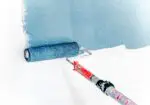
How to tell if your house is well insulated: Signs of bad insulation
Like blood from a wound, your building could be leaking heat. When you turned the dial on your thermostat, you probably didn’t want your furnace to try heating up the entire neighbourhood. Yet, that’s exactly what happens when your home is under-insulated. Poor insulation can often be an expensive problem with cheap solutions — if you act quickly! If not, you might find that a mild leak can turn into a hazard, accompanied by soaring utility bills. The more severe your insulation problems are, the more likely you will need the assistance of one or several professionals to fix.
However, if you check insulation early enough to spot any potential problems earlier, the solution may come at relatively little to no cost. You’ll be kicking yourself for not tackling the issue sooner. In case you were wondering how much insulation saves on your energy bills, Natural Resources Canada (NRCan) estimates that walls alone are responsible for about 20% of heat loss. In other words, for every $50 you pay on your natural gas bill, $10 was spent on wasted heat.
Industrial and commercial buildings can be extra vulnerable to insulation problems. Energy consumption in these centres is already high, so business owners shouldn’t waste additional resources on a spiked utility bill from a poorly insulated building. The problems that may arise can put the building out of commission for the duration of the repairs, and even jeopardize worker safety. Given this, here’s a list of 10 signs of bad insulation to look out for, and how to solve any potential problems.
1. Your walls are freezing
The first step you can take if you suspect you have insulation problems costs exactly $0 to try (unless you want to invest in a thermal leak detector which has greater functionality, and will make carrying out your insulation inspection easier). It’s called the touch test. Go around your home and touch the walls. If you notice that the walls are much colder to the touch than the ambient temperature of the room, or if they feel damp, you have good reason to suspect insulation problems. Cold walls are a signal that the heat being generated by your furnace isn’t sticking around long enough to keep them warm. Not only that, but as warm air comes into contact with the cold wall, the air is cooled as well. In a properly insulated home, the air is contained and the temperature of both the room and walls is eventually equalized. If there are problems with insulation, however, it promotes a vicious cycle where your furnace must work overtime to keep the ambient temperature up.
The Fix: Since this is just the first sign of insulation problems, you’ll want to rule out any unnecessary changes or upgrades first. See if your cold walls are comorbid with any of the following more serious signs of problems.
2. Holes in the exterior walls
Hailstorms, accidents and anomalies can leave your building envelope (the entire exterior walls) damaged. I know you’ve been staring at that hole in your siding thinking you’ll get that patched someday, but you should really fix it as soon as possible. The purpose of walls is to keep the inside air in. So that hole you’ve been procrastinating on is an escape hatch for your warm furnace air.
The Fix: For holes smaller than nail heads or cracks that are less than ¼ inch wide can be fixed relatively quickly, easily and cheaply with some spackling paste from your local hardware store. If the building has vinyl siding, and the hole is slightly larger, a patch of spare siding can be spackled over the fissure. More extensive damage to the panel can be replaced by a professional paneller, without having to repair the entire wall.
3. Bugs or Mice
Maybe the hole in your wall isn’t as overt or wasn’t made in as a dramatic fashion as a hailstorm. Instead, you might notice that despite the number of traps you lay down there’s always a few visitors living rent-free in the house. They’re not teleporting inside, so you have to find how they’re coming inside, because that’s how warm air is going outside. Search along windows or doors for any gaps where they meet the wall. If you find mice droppings, or see them scurrying around, search for the mousehole they’ve made for themselves (or any other port of entry they’ve taken advantage of). This is where a thermal leak detector would come in handy, as it can direct you to any holes in the walls that result in a change of temperature.
The Fix: Painter’s tape, caulk and a caulking gun are all you need to fill in small gaps along window panes and door frames, and they are readily available from local hardware stores and affordable. Small and medium-sized holes can be filled in with spackling paste and wall repair kits which are also available from hardware stores for relatively little.
4. Moisture/Internal Condensation
Internal moisture can take many forms. It may look like puddles spontaneously appearing around your home, or condensation forming on windows and sliding downpipes. If something is continually colder than the ambient temperature, then like cold walls, it works against the temperature of the room. Exposed pipes may be vulnerable to bursting, freezing or leaking during colder temperatures, which is going to be much more expensive to fix. In addition to this, moisture can develop into a more hazardous problem in a short amount of time.
The Fix: Pipe insulation foam for exposed pipes cost under $5. Window insulation kits are also available from hardware stores for cheap and can be done in roughly 30 minutes of DIY.
5. Mould
If by the time you noticed that reappearing puddle it was accompanied by green, grey or black splotches on the walls, floors or insulation fibres, then you have a mould problem. In the worst cases, mould can be fatally toxic. It can lead to and exacerbate respiratory issues, especially in those who have mould sensitivity. Symptoms include irritation of the eyes, nose and throat, incessant cough and phlegm, shortness of breath or worsening asthma. According to the Government of Canada, mould begins to grow within 48 hours and must be dealt with immediately. The dampness of cold walls and condensation provide the perfect breeding ground for these fungi, hence why they may point you towards more serious problems in your insulation.
The Fix: First, identify what the source of moisture is in the home and address that. Otherwise, you’d have only put a bandaid over the problem. For your own safety, safety goggles, a disposable N95 mask, and disposable household gloves should be worn while cleaning up the mould. For small patches of mould on the walls, the Government of Canada has a complete guide to washing the mould. However, for extensive mould, professional assessment and cleanup are required.

6. Drafts
There’s a lesson that some of us learned in eighth-grade science class that’s relevant here: air always moves to fill the space. What does this mean for your home? It means that as your warm air exits your home, cold air will move in to fill in the void. So if you’re feeling a strong breeze or current on the inside, it’s a sign that cold air is moving into your room. In other words: your warm air is escaping. You can feel around closed windows, and doors for these cold air currents, and in some older houses, around the light switches and electrical outlets as well.
The Fix: You need to seal all the exits that your warm air is escaping to. Small air leaks around windows and around your light switches can be caulked over in a matter of minutes. For larger leaks around your windows and doors ensure that your weatherstripping (the rubber seal) is still intact. This is an often forgotten upgrade to solve drafts, and kits are readily available and affordable from local hardware stores. If you’re making a renovation, however, consider changing out your windows and doors into high-efficiency windows and storm doors. High-efficiency windows have higher R-values, which means that they don’t let the heat escape through them as easily, and they’re built with being better insulators in mind. Storm doors, similarly, are built to allow ventilation as desired, but also optimized to keep the outside air out when necessary.
7. Cold Rooms
If you find your furnace seems to be neglecting certain rooms, despite the fact that it’s on for the whole day then that’s a tell-tale sign that the heat in that room is either leaving too soon, or, in some cases, that it’s not coming in at all. In the former case, then another eighth-grade science lesson you should remember is that hot air rises, cold air sinks. If you find that some rooms are letting air out too soon, and you’ve checked all the likely culprits, it may be a sign that the heat is rising out of the room and escaping elsewhere.
The Fix: First things first, ensure warm air is able to get into the room. Check to see your vents are open and the furnace filter is clean. If you have an attic, or a crawl space in the ceiling, then you may have found the culprit. According to Energy Star, the attic and basement are responsible for the most significant heat loss in the building. Even if your attic is properly insulated, you may benefit from sealing air leaks behind knee walls, around the furnace and around your vents.
8. Ice Dams
The image of icicles dangling from the eaves is a winter staple because of how pretty they are. But those pretty icicles can get costly quickly. Ice dams may fall onto pedestrians below, taking the eaves of the house with it. These icicles are formed when heat from the attic escapes, melting the bottom layer of snow on the roof. The water then refreezes along the eaves, when it meets the cold air. Chipping away at ice dams may damage shingles on the roof below.
The Fix: The solution may seem counterintuitive at first glance. A cold roof means that snow won’t be able to melt, kicking off the process. You can accomplish this, by ensuring that your warm air remains trapped inside the attic and using a combination of foam insulation and caulk to seal away any air leaks. You can also vent the roof, which allows any warm air that may have escaped the attic walls to be flushed out while drawing in cool air to keep the snow chilled.
9. Old Insulation
So, visiting your attic this decade was the first time you caught a glimpse of your insulation. You noticed that your insulation looked dull, grey, wet (or worse — mouldy!) and it suddenly occurs to you that… you don’t actually know how often insulation should be replaced (approximately every 15 years). In fact, since you moved in, you hadn’t thought about it at all. My friend, it’s time for a change.
The Fix: This is the job for a professional. At least, it’s much safer that way. Especially for older homes, DIY insulation removal may unleash harmful substances such as asbestos or fibreglass. Asbestos has infamous links with lung disease such as asbestosis and lung cancer, but airborne fibres from fibreglass can also irritate the skin, eyes and lungs, and exacerbate respiratory illnesses such as asthma and bronchitis. For this reason, municipalities also tend to regulate how you are allowed to dispose of fibreglass. Getting a professional to inspect your house is costlier but safer.
10. Sky High Energy Bills
You’ve probably noticed a common thread in most of these symptoms of poor insulation: your furnace works harder. One way to tell if your house is well insulated is by the amount of money you pay for your HVAC to compensate for the leak. If you notice that your utility bills are steadily climbing, despite no change in your consumption, check and make sure your house is well insulated. If you still think you’re overpaying for your utilities there is a way you can change that…
The Fix: Comparing your electricity and natural gas rates to see if there is a cheaper option you could be paying. EnergyRates.ca is a free and unbiased source to compare utility rates and energy retailers according to your area. All you have to do is type in your postal code above. Business, commercial and industrial energy consumers can also get a free custom quote fit for their energy consumption.











